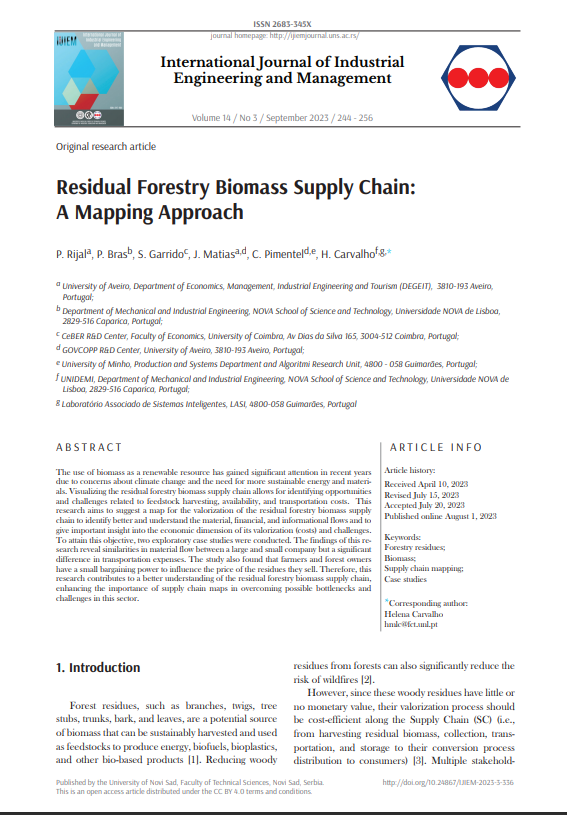
Published 2013-09-12
abstract views: 109 // FULL TEXT ARTICLE (PDF): 0
Keywords
- Forestry residues,
- Biomass,
- Supply chain mapping,
- Case studies
How to Cite
Copyright (c) 2023 International Journal of Industrial Engineering and Management

This work is licensed under a Creative Commons Attribution 4.0 International License.
Abstract
The use of biomass as a renewable resource has gained significant attention in recent years due to concerns about climate change and the need for more sustainable energy and materi- als. Visualizing the residual forestry biomass supply chain allows for identifying opportunities and challenges related to feedstock harvesting, availability, and transportation costs. This research aims to suggest a map for the valorization of the residual forestry biomass supply chain to identify better and understand the material, financial, and informational flows and to give important insight into the economic dimension of its valorization (costs) and challenges. To attain this objective, two exploratory case studies were conducted. The findings of this re- search reveal similarities in material flow between a large and small company but a significant difference in transportation expenses. The study also found that farmers and forest owners have a small bargaining power to influence the price of the residues they sell. Therefore, this research contributes to a better understanding of the residual forestry biomass supply chain, enhancing the importance of supply chain maps in overcoming possible bottlenecks and challenges in this sector.
Article history: Received (April 10, 2023); Revised (July 15, 2023); Accepted (July 20, 2023); Published online (August 1, 2023)

